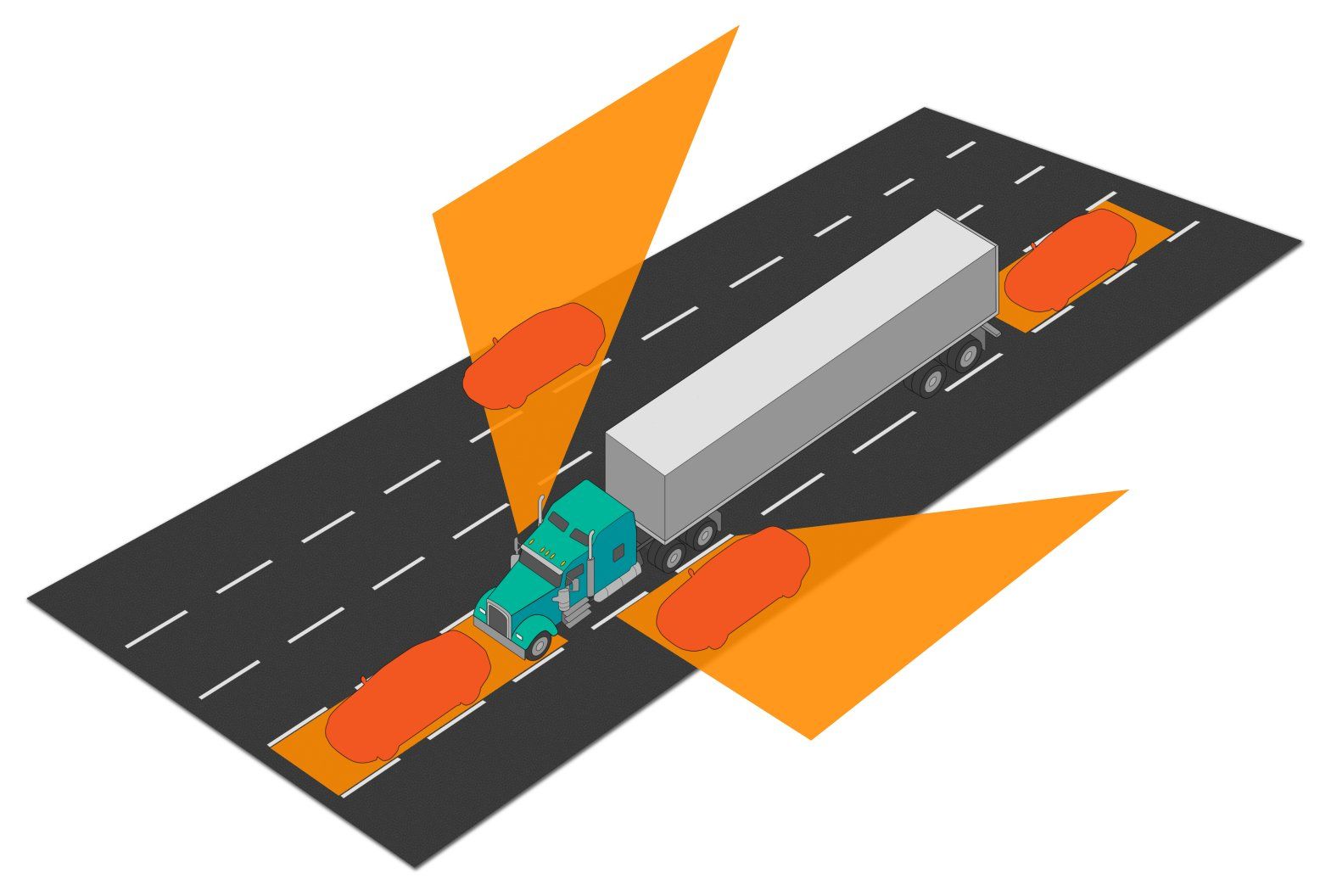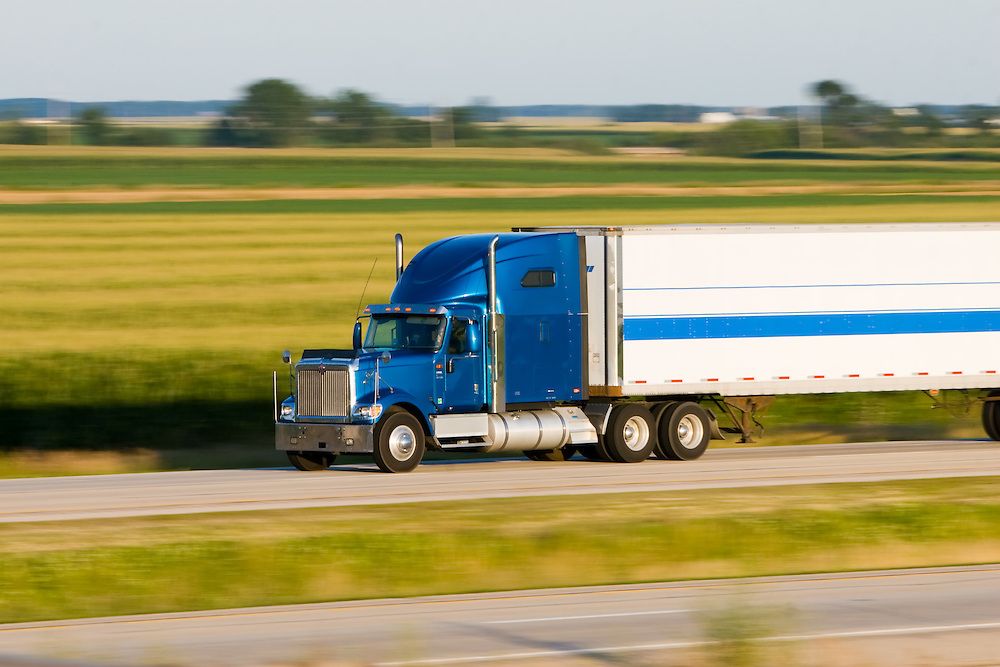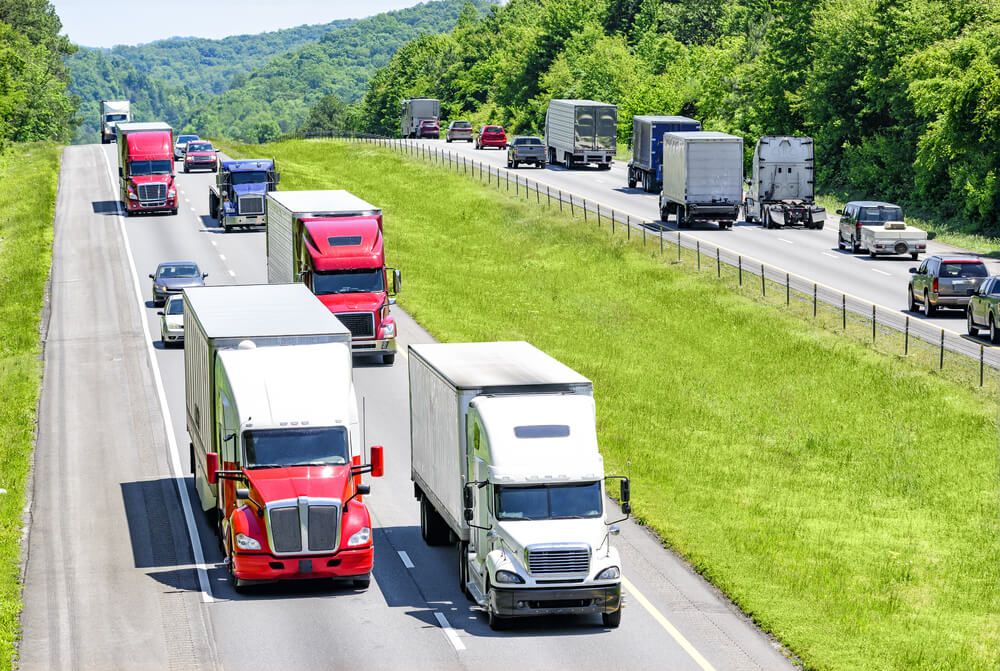One highly overlooked bit of highway safety is how to deal with semi-trucks. Those behemoths of steel take up a lot of motorway real-estate. With drivers who’ve been on the road for hours, they face a lot more problems than you would in your car. And if you get into an accident with a truck, chances are you’ll be worse off than them.
What is the No-Zone?

The principle of a “No-Zone” has been banged into the head of anyone that had to go through the agonizing torture of drivers’ ed. Some people, maybe even you, didn’t take the course and may not have had this principle engraved into your brain.
This “so 80s it hurts” rap song will get the meaning across, but to put it simply, a “No-Zone” is any area around a truck where the driver can’t see you. It’s a fancy term for blind spots, and because trucks are bigger, their blind spots are colossal.
The same goes for the sides of a truck. With the driver up high, a car can easily slip beside the cap and go completely unnoticed. The side visibility for trucks is centered more on the trailer, but under no circumstances should you linger beside a semi. More on that in a bit.
And lastly, there’s the No-Zone directly behind the trailer. With no rearview mirror, a truck driver has absolutely no eyes on anything directly behind them. However, their side-view mirrors pick up some of the slack. With convex mirrors, truck drivers can see around the back corners of the trailer at the cars following behind. If you’re right on their rear, they won’t see you one bit, but keeping a safe following distance will ensure that the driver sees you before maneuvering the truck in any way.
The Reasons You Should Stay Out

A good way to know if you’re riding in a truck’s No-Zone is if you can’t see the driver in their side-view mirror. If you look up and the driver’s eyes aren’t visible, then neither are you. And you should do everything in your power to fix that for a number of reasons.
First of all, a truck barreling down the highway at 50, 60, 70 miles per hour has to push through a lot of standing air. The aerodynamics of a truck are subpar to say the least, and if you’re driving right beside a big rig, all of that air will get slammed into your car. Riding right next to a truck is dangerous, and it interrupts the flow of traffic (other people want to pass that truck too, and if someone is riding beside it, everyone is slowed down).
Then there’s a truck’s ability to brake. Yes, one of the reasons trucks keep a large following distance is so they can see the car in front of it, but it’s also to make sure they have enough room to stop. Trucks need a lot more stopping power to go from 70 to 0, and truck spills can be quite messy, or quite strange. So if you’re making things harder for them by not keeping your distance, you can kiss your rear-end goodbye.

Lastly, you’ve likely noticed that semi-trucks, despite how large they are, merge fast. They flick on their blinkers, make their intentions clear, and take action. You may see that as unsafe, but in reality, if a truck sees a spot large enough for them, they’ll take it.
That being said, if you’re in that side No-Zone and they merge, they’re not going to see you. So please, do not ever sit beside a truck. Pass them as fast (and as safe) as you can, especially if their blinker goes on. They’re waiting for you to do it, and they’re well aware of how slow they are in comparison to other cars. Just don’t cut them off, that might make them a bit cross.
One Thing To Always Remember
Truck drivers are professionals. They’ve seen every kind of driver, from newly licensed teens to aggressive and reckless speedsters. And while not every trucker on the road has the same amount of training, the vast majority of them have some level of experience. They’re licensed to drive these trucks and have strict rules and guidelines to follow. They’ve been trained to know when somebody is near them. They constantly scan, look ahead, and maintain a safe braking distance. And above all else, they do this for a living.
Driving trucks is their job and their livelihood. While they are certainly prone to mistakes, truck drivers are likely better drivers than you. Leave it to the pros.
